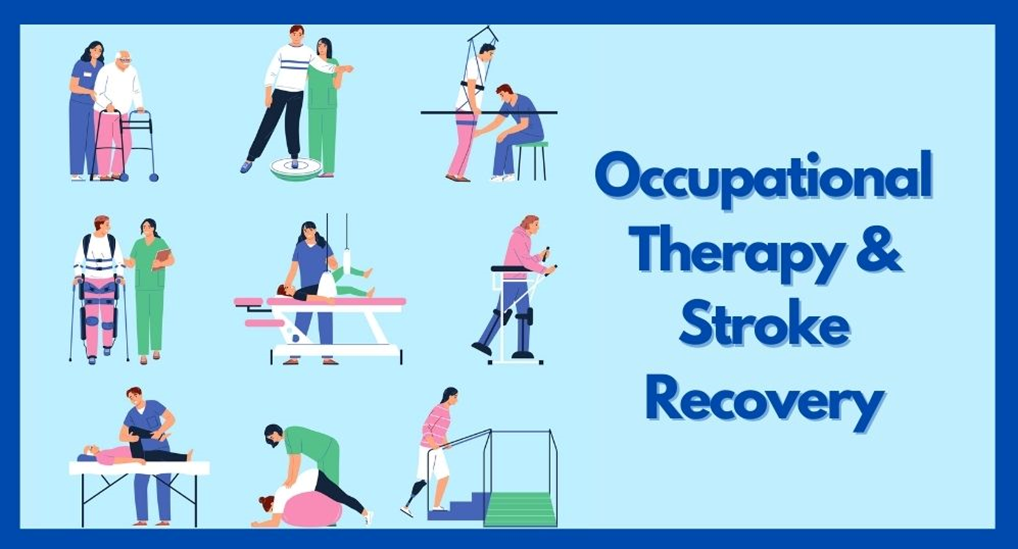
Occupational Therapy and Stroke Recovery

Every day, we deal with a serious health issue called Stroke, Hemiplegia, or Cerebrovascular Accident. After heart disease and cancer, people consider it the third leading cause of death. People who have had a stroke experience different signs and symptoms. This condition can make one side of your body unable to move, feel, or think clearly. It can also make daily activities and speaking difficult.
Occupational Therapy is a key part of rehabilitation. It begins in the ICU and continues in community programs. Occupational therapy after stroke ensures maximum participation for stroke survivors and their caregivers.
Let’s See What Are The Major Causes of Stroke :
The major factors contributing to the onset of Stroke include -
- Hypertension increases the risk of developing stroke throughout a person's lifetime.
- A hemorrhage is when a blood vessel in the brain breaks because of trauma or high blood pressure.
- Tobacco Use – Cigarette Smoking increases the risk of acquiring Stroke nearly two times.
- Older individuals and males have a higher risk of suffering from stroke.
If you drink too much, are overweight, don't exercise, eat unhealthy food, or get stressed, your risk of stroke can go up.
DISORDERS ASSOCIATED WITH STROKE:
- Motor Impairment, also called Hemiparesis or Hemiplegia, happens when one side of the body becomes weak or paralyzed. This can cause problems with posture, using the affected hand and leg, and walking.
- Cognitive impairment includes memory, understanding, and problem-solving deficits. It also makes learning new techniques difficult and reduces social interaction .
- Impaired Coordination and controlling movements by affected hand/leg.
- Oral Impairment – Facial weakness leading to difficulty in chewing, swallowing, and drinking.
- Simple tasks like dressing, grooming, using the bathroom, and bathing can also be hard.
- Many people face mental health disorders like depression , PTSD, anxiety, and emotional dysregulation.
An Occupational Therapy practitioner assesses areas of impairment following a stroke. They work with the client to set goals and give activities for independent living.
Occupational therapy may include the following, based on the client's needs:
- In-depth assessment of the areas of concern
- Establishing the ability to perform the defective skills.
- Provide Adaptive techniques and equipment to promote an independent lifestyle
- Teach the caregiver to prevent the development of any secondary complications
- Provide psychological support to the client and caregiver
- Involving the client in social gatherings and work.
Occupational therapy is a program that helps with recovery after a stroke, based on the client's condition.
In occupational therapy, recovery occurs in three stages: acute, rehabilitation, and community readjustment.
The acute stage begins when the hospital admits the client and makes a diagnosis. Occupational therapy during the acute stage works for -
- Maintaining range of motion and providing early mobilization of the involved joints.
- To avoid secondary problems like bed sores, swelling, and stiff joints.
- Teaching bed mobility and positioning techniques as needed.
- Psycho-educating caregivers about the client’s condition and therapy goals.
During the rehabilitation stage, the therapist assesses to find areas of impairment.
The assessment covers motor, sensory, emotional, and cognitive areas. It also looks at daily living tasks.
The therapist assists the client in setting goals and planning treatment for their disabilities.
Occupational therapy after a stroke aids in rehabilitation.
Let's explore how it helps.
- Practicing exercise after a stroke is a big part of the rehab process. It promotes activity performance, and the ability to carry out daily tasks.
- Reduces chances of developing stiffness and tightness in affected arms and legs.
- After a stroke, occupational therapy helps people regain lost movements. They do this in a controlled environment. The therapist gives exercises to help the arm/leg work better again. It also includes educating the client about moving in bed and walking in the house and community.
- The therapist assists you in learning skills to do daily activities on your own. Occupational therapy modifies your home to fit your needs and abilities.
- Cognitive Retraining Treatment helps with cognitive deficits after stroke. It reteaches specific skills and compensates for lost abilities. Examples of techniques include memory retraining, problem-solving tasks, and decision-making activities.
- Vocational training helps clients address work issues and restrictions. This helps them get back to normal lives and be productive.
Patients and families often need support after a stroke, to adapt to physical, social, and emotional changes. Occupational therapy assists clients and caregivers with dealing, socialising, and joining groups. This helps clients reduce emotional burden.
Living with disabilities after a stroke is a lifelong challenge. Stroke recovery programs, such as exercise, aim to provide affordable services in the community. Occupational therapy helps stroke survivors do more things, be more independent, and have a better life at home and work.
image credit : freepik

Mpowering Minds 2026 – Women’s Mental Health Summit: Championing a New Era of Well-Being
Therapy Approaches That Help Heal Intergenerational Trauma: CBT, DBT, Somatic Work & More

